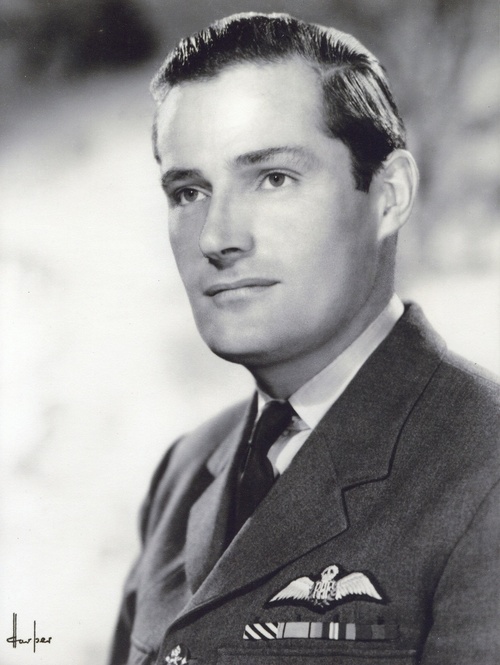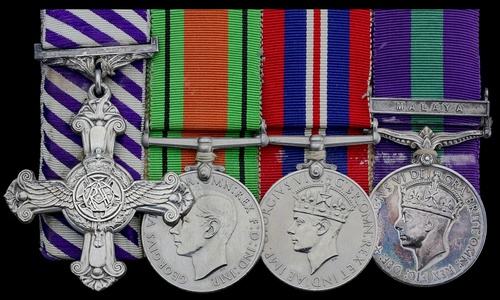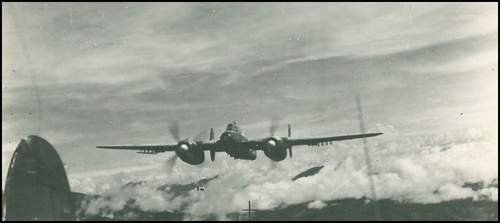Auction: 20001 - Orders, Decorations and Medals - conducted behind closed doors
Lot: 747
An outstanding Malaya 1950-52 operations D.F.C. group of four awarded to Wing Commander A. P. Norman, Royal Air Force, who, having gained his laurels in Typhoon rocket strikes over Aden in 1948-49, amassed a tally of 229 operational sorties during the course of Operation “Firedog”, carrying out bombing and cannon attacks on Malayan jungle targets in Brigands of No. 45 and No. 84 Squadrons, the majority of them as Squadron C.O. and Strike Leader
Distinguished Flying Cross, G.VI.R. 2nd issue, the reverse officially dated ‘1952’; Defence and War Medals 1939-45; General Service 1918-62, 1 clasp, Malaya (Act. Sqn. Ldr. A. P. Norman, R.A.F.), mounted court-style as worn, minor contact wear and a little polished, very fine (4)
D.F.C. London Gazette 29 August 1952:
‘In recognition of distinguished service in Malaya.’
The original recommendation states:
‘Squadron Leader Norman has been continuously engaged on anti-communist operations in Malaya since January 1950, first as a Flight Commander and, since September 1951, as Officer Commanding No. 84 Squadron. During this time, this officer has shown the highest powers of leadership and devotion to duty and has been an inspiration to his squadron. This was particularly noticeable at a time when a series of technical defects in Brigand aircraft and equipment resulted in a number of serious accidents and losses on operations, the cause of which remained for a time undiscovered. It was largely due to the example and leadership of Squadron Leader Norman that the morale of his squadron did not seriously deteriorate. In addition to the large number of operational sorties that this officer has carried out over what is probably the most dangerous jungle country in the world, Squadron Leader Norman has been untiring in his efforts to suggest ways and means by which air operations in support of the Army in Malaya could be made more effective. Squadron Leader Norman has played a leading part, as Flight Commander and Squadron Commander, in maintaining the very high morale of his squadron through some very difficult periods.’
Ayshford Peter Norman was born in May 1924 and educated at Hurstpierpoint, prior to enlisting in the Royal Air Force in London in August 1942.
Embarked in the Queen Mary for New York in June 1943, he journeyed north to commence his pilot training in Canada, where he gained his Pilot’s Flying Badge at Yorkton, Saskatchewan, in December of the same year, and was commissioned as Pilot Officer. Back in the U.K. by May 1944, where he was advanced to Flying Officer, Norman served at assorted O.T.Us and A.F.Us for the remainder of the War.
Operations - Aden
Post-war, he served in Mosquitos out in Aden, namely in No. 114 Squadron from May to August 1946, and No. 8 Squadron from September 1946 to March 1947, prior to returning to the U.K. to attend the Central Gunnery School. He then returned to No. 8 Squadron in Aden at the end of the year, this time piloting Tempests and acting as air cover for negotiations on the ground, in addition to carrying out at least 20 rocket strikes - his C.O., Squadron Leader F. W. M. Jensen was awarded the D.F.C. in the same period. For his own part, Norman returned to an appointment at R.A.F. Finningley in early 1949, followed by a conversion course to Brigand aircraft at Leeming, whence he was posted to No. 1 Ferry Unit in the Far East.
The Brigand - Malaya - D.F.C.
The first unit to convert to the Brigand was No. 45 Squadron, then based at R.A.F. Station Tengah, Singapore, flying operations in support of British forces against the communist guerrillas then engaged in an insurgency in Malaya - the first combat operation was conducted by a single Brigand of No. 45 Squadron against guerrilla targets in jungle west of Kluang, Malaya, on 19 December 1949. On this flight, the Brigand carried three rockets, one 500lb and two 1,000lb bombs. The operation was successful, and No. 45 Squadron soon completed its transition to the Brigand as more aircraft arrived. Thereafter, Brigands of No. 45 Squadron and, soon afterwards, No. 84 Squadron, were routinely engaged in strikes against communist insurgent targets throughout Malaya, both in direct and close support of ground forces, as well as providing air cover as needed to convoys on the ground against possible ambushes. And it was for his gallant service in both of these squadrons, but particularly as C.O. of No. 84, that Norman would be awarded his D.F.C.
He joined No. 45 Squadron in Singapore in early 1950, the commencement of some three years of operational flying, his Flying Log Book of the period recording his first sortie on 23 March - a bombing strike on a jungle target east of Mount Ophir. And between then and August he completed another 31 such strikes over Malaya, following which he was posted to the Far East Examining Squadron and advanced to Flight Lieutenant.
Returning to an operational footing with No. 84 Squadron in Singapore in August 1950, his new C.O. was Squadron Leader George Unwin, D.F.M., the ex-19 Squadron Battle of Britain ace who would shortly add a D.S.O. to his accolades. Four weeks later, however, Norman himself was appointed Squadron C.O. in the acting rank of Squadron Leader. And, as verified by his Flying Log Books for the period in question, he raised his tally of operational sorties to the 229 mark, 167 of them as Strike Leader, a remarkable feat comprising some 750 hours of operational flying.
And throughout this tour of duty Norman, in common with other pilots of No. 45 Squadron and No. 84 Squadron, faced considerable risks over and above enemy fire, namely a string of mechanical and other defects in the Brigand’s design and airframe. One of the first problems to arise was the failure of the undercarriages to lower, owing to rubber seals in the hydraulic jacks gradually breaking up because of the hot, humid climatic conditions, for which they were not suitable.
But just as this problem was being resolved, another more serious one arose with the aircraft’s 20mm. cannon system - widely used by Norman during his tour of duty. It was ascertained that a build up of gases in the long cannon blast tubes, which ran under the cockpit, were igniting through use of high-explosive shells, which in turn severed hydraulic lines, which would burn. In effect, the Brigands were shooting themselves down. In the event, this issue was cured by drastically reducing the ammunition loads and using only ball rounds.
The Brigand also had a propensity to shed one propeller blade leading to complete propeller failure, which in turn would lead to the engine being wrenched off the wing, and an inevitable crash. This was found to be caused by corrosion in the propeller locking rings. More frequent maintenance helped alleviate this problem.
Another design flaw concerned the leather bellows used to deploy air brake during dives. In the tropical climate in which the Brigand found itself in Malaya, the leather would rot away, causing the brakes to fail. This led to Brigands losing wings in dives due to excessive airspeed or rotation as only one brake deployed. When this problem was discovered, the air brakes of all Brigands were wired shut, decreasing the aircraft's dive bombing capabilities. Nonetheless, No. 45 Squadron converted to de Havilland Hornets in January 1952, while 84 Squadron was disbanded in February 1953. Soon after this, Brigands - of which about 170 had been manufactured - were grounded and withdrawn from service.
601 (City of London) Squadron - Meteors - and beyond
Back in the U.K., where he received his D.F.C. at the Queen’s first ever investiture, Norman attended the Central Flying School and qualified in Meteors as an instructor in jet aircraft in March 1953. Posted to No. 600 (City of London) Squadron, Royal Auxiliary Air Force, in the following month, and remained similarly employed until December 1954, in which period he amassed many hours in Meteor VIIs and VIIIs, serving variously at the R.A.F. Oldenburg, Germany, Takali, Malta, and Biggin Hill - his C.Os including Wing Commander John Merifield, D.S.O., D.F.C., the famous wartime P.R.U. pilot, while H.R.H. Prince Philip, the Duke of Edinburgh, was the Squadron’s Honorary Air Commodore; the lot is accompanied by some copied extracts from Gentlemen in Blue, in which Norman - and several amusing anecdotes - receive due mention.
In early 1955, Norman joined H.Q., Home Command, at White Waltham in Berkshire and thence, in February 1957, the R.A.F. Staff College at Bracknell, Berkshire, followed by a posting to H.Q., 2nd Tactical Air Force in Germany in the following year, where he served until returning home in October 1960. A Chief Flying Instructor and Varsity Squadron C.O. among other appointments in the interim, he was advanced to Wing Commander in January 1968 and, having held an appointment as an Assistant Air Advisor at the British High Commission in Australia, was finally placed on the Retired List in October 1972.
Sold with a complete run of the recipient’s original Flying Log Books (7), comprising Royal Canadian Air Force Pilot’s Flying Log Book (R.C.A.F. Form R. 95 Type), with entries for the period April 1943 until August 1950, with assorted photographic inserts; R.A.F. Pilot’s Flying Log Book, privately bound in blue leather with gilt titles and name, with entries for the period August 1950 to May 1956, with assorted photographic inserts; R.A.F. (Form 414 Type), with entries for the period May 1956 to September 1961; similar type, with entries for the period September 1961 to May 1962; similar type, with entries for the period June 1962 to February 1970; similar type, with entries for the period April 1970 until September 1972, with inserted Instrument Pilot Rating Cards, photographs and Polar Certificate for reaching the ‘Top of the World’ and circumnavigating the North Geographic Pole, dated 5 August 1972; together with a Department of Civil Aviation, Commonwealth of Australia Pilot’s Flying Book, with a few entries from Norman’s time as an Assistant Air Advisor to the British High Commission.
Subject to 20% VAT on Buyer’s Premium. For more information please view Terms and Conditions for Buyers.
Sold for
£5,200
Starting price
£3200











